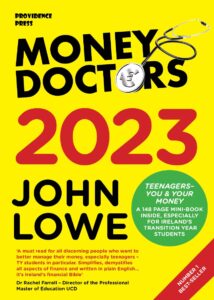A defined benefit (DB) pension is one where the holder is guaranteed a fixed monthly income by their company until they die. Public sector pensions are an example. They do not have to worry about the stock market performances of their fund unless of course the company they work for becomes insolvent. 9 years ago there were 197,000 people who were members of 993 DB pension schemes. In 2016 Bank of Ireland had a deficit in their DB scheme of a whopping € 478million. 80% of DB schemes were under water which is why many companies stopped their DB schemes and swapped them into Defined Contribution (DC) schemes. The main issue with DC schemes is performance, performance, performance. If your DC fund hits a BEAR ( falling ) market, your pension is also hit. John Lowe of MoneyDoctors.ie takes a look at the growing trend of converting these DB pensions at retirement age to annuities or an Approved Retirement Funds (ARFs) – the only alternative to annuities brought into law in 1999.
Peter is 60 and had a useful € 480,000 defined benefit pension fund. He was guaranteed € 18,300 per annum until death and if his wife outlived him, she received € 9,150 until she died. No benefits after death while there is also an initial guaranteed period usually 5 years. If they both die in the 6th year, the insurance company keeps the entire fund not the family nor the estate.
Peter’s annuity rate in this case is 3.81% – the percentage of the pension fund he receives each year from the insurance company. More importantly if he outlives the annuity (taking out more money than is in the fund) he would have to live beyond 86 years of age.
The alternative ? Peter can transfer the fund over to a Pre-Retirement Bond (or Buy Out Bond) and immediately he can opt for retirement benefits
- Take 25% tax free lump sum – € 120,000
- Invest the balance into an ARF
- The balance € 360,000 is then invested into an ARF – he can choose the fund but it is important these funds grow by at least 5.5% each year until he is 71 and 6.5% once you go over this age as
a) He MUST take out 4% (taxable) each year up to age 71 called imputed distribution and 5% once he is 71 years old
b)There are also annual management charges of c. 1.5% each year from the insurance company managing the ARF/ AMRF hence it is important his fund grows otherwise he will run out of money.
c) Effectively that 4% annual or monthly withdrawal from the ARF equates to € 14,400 annually or € 1,200 monthly ( taxable )
If there is a fund balance at time of death no matter when that is, this balance goes to his wife first as if it is her ARF and then if children, 70% of the fund (30% tax) and if no children into his estate and distributed according to his Will instructions.
In Peter’s case, he decided the benefits outweighed the disadvantages…
- He receives an immediate € 120,000 tax free into his hand as a result of going the Pre-Retirement Bond – ARF / AMRF route
- He will be taking € 14,400 from the ARF fund every year…as opposed to his €18,300 annuity…
- If he dies, the balance is available to his wife and family ( the latter taxed at 30% )
- The ARF will be carefully managed to maximise that growth… over any 10 year period, the stock market has always been the best return of any asset class – from 1991 to 2020 the average annual growth in the stock market was 10.72%
- Warren Buffett, the world’s richest person once stated the stock market is a mechanism for transferring wealth from the impatient to the patient…
So if you are in a such a DB scheme, think about the long term and the retirement options…and take expert professional advice.

